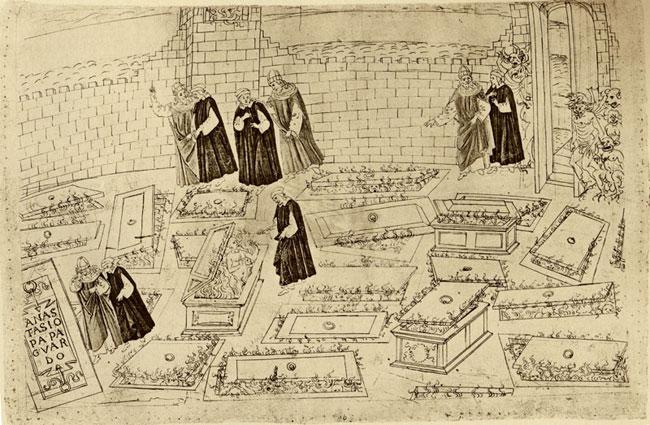Sandro Botticelli (1444/45 - 1510)

Though Botticelli now enjoys a world-wide reputation as perhaps the most famous early Renaissance artist, his paintings were highly esteemed for only about a quarter century during his lifetime, from the early 1470s through the mid 1490s, and primarily in one city, his native Florence. By the time of his death Botticelli had fallen out of fashion and remained largely forgotten until his rediscovery in the late nineteenth century. From that time on, he has been appreciated primarily for the delicacy, gracefulness, and linear beauty of his mythological works from the 1480s, the Primavera and the Birth of Venus. Both of these works reveal not only Botticelli's poetic sensibilities, but his contact with Florentine poets
Giorgio Vasari, our most important early source on Botticelli, wrote in 1550 that "Since Botticelli was a learned man, he wrote a commentary on part of Dante's poem, and after illustrating the Inferno, he printed the work." Vasari refers Botticelli's drawings for some of the engravings by Baccio Baldini that adorned the first edition of the Divine Comedy published in Florence, in 1481, with commentary by Cristoforo Landino. Botticelli also painted a portrait of the poet, probably to adorn the library of a scholar. These two projects reflect the revival of interest in Dante in late fifteenth-century Florence.
An anonymous author, writing in about 1540, informs us that Botticelli "painted and illustrated a Dante on sheepskin for Lorenzo di Pierfrancesco de' Medici [who also owned the Primavera] which was held to be something marvelous." He refers to an extraordinarily ambitious and original project. Whereas previous artists had decorated manuscripts of the Divine Comedy, usually with small images of a few key scenes that appeared on the same page as the text, Botticelli planned to illustrate every canto. Moreover, the drawings are very large, arranged horizontally (unlike most books) and full the entire smooth (flesh) side of the parchment. Originally, the images could be seen together with the text, written by Niccolò Mangona on the opposite (rough) side of the parchment.
Of this project 92 parchment sheets survive, divided between Berlin and the Vatican. Botticelli completed the outline drawings for nearly all the cantos, but only added colors for a few. The artist shows his "learning" and artistic skill by representing each of the three realms each in a distinctive way. More than his contemporaries, Botticelli was extremely faithful to Dante's text. Moreover, especially in the teaming, bewildering images of the Inferno, he included a large number of scenes for each canto. For the Purgatorio, Botticelli was somewhat more selective and made greater use of "rational" perspective: for the Paradiso, his simplified drawings capture the ethereal nature of the text. Botticelli also created a highly detailed cross section map of the underworld, and a frightening portrayal of Satan on a double sheet.
Jonathan K. Nelson Syracuse University in Florence
fonte: @edisonmariotti #edisonmarioti https://twitter.com/Libroantiguo/status/542065942793293824/photo/1


Nenhum comentário:
Postar um comentário